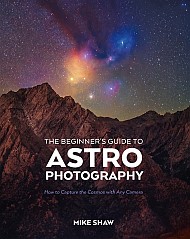Astronomy
Paralysed man can feel objects through another person's hand
What is Type 1 Diabetes? Here’s Your 5-Minute Primer
What happens when your body suddenly stops making the one hormone that keeps your blood sugar in check?
Martian volcanoes may have transported ice to the planet's equator
Martian volcanoes may have transported ice to the planet's equator
We’re finally reading the secrets of Herculaneum’s lost library
We’re finally reading the secrets of Herculaneum’s lost library
Has JWST Finally Found an Exomoon?
Data from the James Webb Space Telescope and other observatories suggests a supervolcanic exomoon may lurk around the giant exoplanet WASP-39b
Modular Robots Could Both Explore Off-World And Build Infrastructure
Modularity is taking off in more ways than one in space exploration. The design of the upcoming “Lunar Gateway” space station is supposed to be modular, with different modules being supplied by different organizations. In an effort to extend that thinking down to rovers on the ground, a new paper from researchers at Germany’s space agency (DLR), developed an architecture where a single, modular rover could be responsible for both exploration and carrying payloads around the Moon or Mars.
Arab Scholars May Have Noted the Supernovae of 1006 and 1181
It’s great to see old astronomical observations come to light. Not only can these confirm or refute what’s known about historic astronomical events, but they can describe what early observers actually saw. A recent study cites two Arabic texts that may refer to accounts of two well-known supernovae seen in our galaxy: one in 1006 AD and another in 1181 AD.
'Pregnancy test' for skeletons could help reveal ancient mothers
'Pregnancy test' for skeletons could help reveal ancient mothers
Immigrants Make Up More Than 30 Percent of Nobel Science Winners Since 2000
Of the 202 Nobel laureates in physics, chemistry and physiology or medicine this century, fewer than 70 percent hail from the country in which they were awarded their prize. These graphics trace their journeys
New DNA Search Engine Brings Order to Biology’s Big Data
MetaGraph compresses vast data archives into a search engine for scientists, opening up new frontiers of biological discovery
In the Footsteps of Galileo
Sky & Telescope’s 2025 “Galileo’s Italy” tour offered much more than sightseeing, as participants enjoyed multiple opportunities to stand on astronomical hallowed ground.
The post In the Footsteps of Galileo appeared first on Sky & Telescope.
The Hidden Rings of the Milky Way
We know lots about our Galaxy yet still, some regions still hold countless secrets. Recently, a team of astronomers using South Africa's MeerKAT radio telescope uncovered 164 of them, compact radio rings. Each one smaller than an arcminute across, were hiding along the plane of the Milky Way, and were just waiting for a telescope powerful enough to reveal them.
A Message in a Bottle from Another Star
For millions of years, a fragment of ice and dust drifted through interstellar space, its origin, a distant planetary system. This summer, that fragment finally entered our Solar System, becoming only the third confirmed interstellar visitor and earning the designation 3I/ATLAS. When astronomers at Auburn University pointed NASA's Swift Observatory toward this icy chunk, they detected water vapour streaming from its surface. It was revealed through the faint ultraviolet glow of hydroxyl molecules and was completely unexpected.
Why Building an Artificial Pancreas for People with Diabetes Is So Hard—And How Tech Is Finally Catching Up
How a father’s love, entrepreneurship and tech advances could lead to a working artificial pancreas
Saving the Vision of People with Diabetic Retinopathy
Diabetic eye disease robs sight from millions. But there are often ways to save vision
Can Genetic Testing Predict Type 1 Diabetes? Experts Say Earlier Treatment Is Possible
Genetic screening can mean that people at risk of type 1 diabetes get earlier treatment and better outcomes
Meet the Advocates Who Are Changing Type 1 Diabetes Care for the Better
Advocates are lightening mental health burdens, improving pregnancy care and helping patients in developing countries


